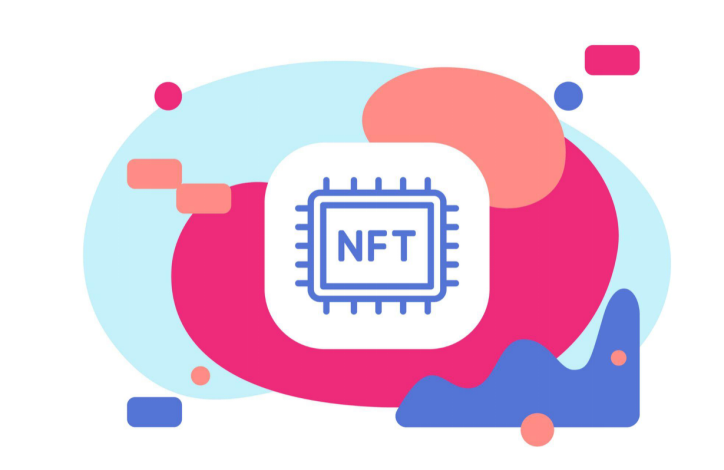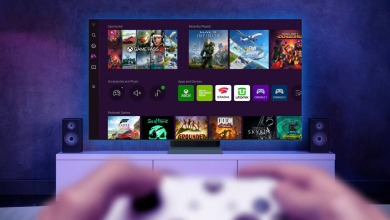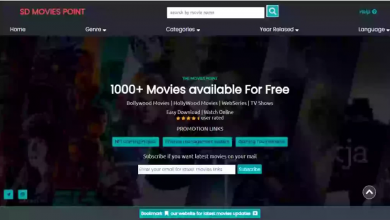What Should Be Avoided When Creating NFT Marketplaces In 2023?

You probably don’t need an introduction to NFTs if you’ve ever worked in the crypto industry. They have long been the talk of the town, and the introduction of CryptoPunks in 2017 increased their notoriety. NFTs have clearly become one of the biggest innovations of the era, with many real-world use cases, despite their volatility and the NFT market’s significant ups and downs. It’s interesting that this volatility is a sign of how many people are entering the NFT industry.
NFTs are a component of the cryptocurrency industry, but you cannot buy them on controlled exchanges like Coinbase or Kraken. However, they are easily accessible in markets specifically for NFTs. NFT marketplaces provide a setting for the issuing and sale of NFTs as well as a venue for creative professionals to display their skills and securely advertise their works.
NFT marketplaces are growing in number as more NFTs are created every day. NonFungible.com estimates that NFT sales typically range from $10 million to $20 million each week. The NFT industry experienced an eightfold increase in quarterly trading volumes in the second and third quarters of 2021, when the NFT trading volume increased by 704%.
It’s clear that individuals are interested in this lucrative sector, as NFT marketplace development has started for non-fungible token trading. However, as the web3 ecosystem continues to develop, there is rising uncertainty about how to create an NFT marketplace in the rapidly changing NFT sector. We have written this advice on what to do or not do while developing NFT marketplaces, with a special emphasis on the latter, to clear up any ambiguity and provide appropriate counsel.
How are NFT marketplaces operated?
Trading and minting are the two main activities that take place in NFT marketplaces. Any digital material, such as a JPEG or MP3 or MP4, can be converted into an NFT using minting and then safely kept on the host blockchain of the marketplace. Then, these NFTs can be sold for a profit.
Minting
The method of minting NFTs is simple. You must first install a wallet’s suitable browser extension, such as Metamask, to use it with the NFT Minting Website of your choosing, such as OpenSea. You can create an account on any Ethereum-based marketplace using Metamask, an Ethereum wallet.
You must upload the file or work of art to the marketplace after creating an account in order to have it converted into an NFT. Similar to uploading a photo or video to Instagram, the process entails naming the work, providing a description, and setting up royalties. You can further personalize your NFTs by adding them to an existing collection or by adding stats, features, and levels in some marketplaces, like OpenSea. You are now prepared to sell it after completing these procedures.
Trading
Anyone with the necessary number of cryptocurrencies can purchase an NFT when it is issued on a market. You need a cryptocurrency wallet that works with the marketplace in order to buy an NFT. For Ethereum-based marketplaces, for instance, you require a Metamask wallet. The required cryptocurrency must then be purchased, and the wallet must be connected to the market.
You have two options for purchasing NFTs: fixed-price listings or auctions. All you have to do to purchase an NFT through an auction is submit your bid and watch for the outcome. If your bid appears to be successful, the money will be taken out of your wallet and added to your newly acquired NFT wallet. Similar to buying groceries and using Google Pay, buying an NFT through a fixed-price listing works similarly. The cost of the relevant NFT has already been determined, and the purchaser may pay directly for it.
What should you avoid doing while creating an NFT marketplace?
Not adhering to the required NFT standards
The most well-known and widely applied NFT standard to date is ERC-721. So make sure your marketplace complies with ERC-721 guidelines if you’re establishing one. For instance, OpenSea is based on Ethereum and adheres to the ERC-721 Ethereum NFT standard, which is now the most popular standard.
The ERC-721 standard’s recommended structure and naming scheme should be followed when constructing NFT data or metadata. By doing this, you make sure other marketplaces can access NFTs made on your marketplace. By adhering to the right standards, users can access and exchange NFTs amongst marketplaces that employ the same standard. The same should be true for your NFT marketplace’s ability to list and exchange NFTs made on other marketplaces.
It’s important to note that standards from other blockchain protocols, such as Solana, can also be used to create NFT marketplaces in addition to ERC-721. The standards you adhere to when creating NFT marketplaces essentially depend solely on your preferences. However, it’s advised that you take into account the needs of end users while making a decision.
Obtaining information from the database
Decentralization was encouraged by the introduction of blockchain in part to prevent monopolies and the ownership of users’ personal data by centralised entities. As a result, all data about an NFT, such as its name, the name of the collection, the price, etc., should be directly fetched from its host blockchain rather than the marketplace’s database.
Any person working in the system’s backend can alter the data that is available on a marketplace’s database, allowing them to manipulate it for their own gain. However, information kept in a blockchain is unchangeable. As a result, it gives complete transparency and cannot be modified or erased. As a result, the information about NFTs on your marketplace and their transactions is completely untouchable.
The metadata should also be stored on the blockchain rather than a database. Users could get into problems if they store any data elsewhere other than the marketplace’s host blockchain. Off-chain data storage is economical, but it leaves data open to abuse and danger. The users might not be able to recover the data in the event of a system breach.
Advantages of on-chain data and metadata storage:
- Data security
- Transparency
- Immutability
- Advanced data security
- Data continues to exist on the chain without any threat of deletion
Backend write operation for the blockchain
In NFT marketplaces, there are two ways to start a transaction: from the frontend and from the backend. The user signs the transaction using their private key, which is kept in their crypto wallet, during the frontend process. However, platform developers who are working in the backend and utilising their private key carry out the backend process.
Never perform any blockchain write activity from the backend, it is advised. Allow consumers to sign their own transactions, cover gas costs, and do any other activities required while purchasing NFTs. Allowing users to take complete control of their transactions and gain independence in the process. Letting developers to own your NFTs requires allowing the backend to handle such transactional formalities. Additionally, doing blockchain write operations from the backend goes against Web3’s fundamental purpose of decentralisation.
Incorrect smart contract architecture
In an NFT marketplace, smart contracts are used to accomplish all operational activities. Every action that needs to be taken on the platform is triggered by them. As a result, they are crucial to how NFT marketplaces operate. Smart contracts should always be correctly structured because of this.
The two types of smart contracts listed below should be included when creating an NFT marketplace:
- Users can mint NFTs using ERC-721 contracts.
- Controller contracts that allow users to sell their previously constructed NFTs (whether they were created on your platform or somewhere else).
A smart contract that adheres to the ERC-721 standard is known as an ERC-721 contract. Usually, the artist or person who invented an NFT defines it so they can use it to produce an NFT token. The distinct ID of the NFT, a URI, and other information may be included in an ERC-721 token created by a contract. The link to the tokenID’s metadata is indicated by the URI, or Uniform Resource Identifier. On the other hand, the controller contract makes it easier to trade NFTs.
Not putting NFT commissions into effect
A marketplace may use either royalty fees or marketplace commissions as commission kinds. When creating an NFT marketplace, the following two commissions can help you and the artists make more money.
Royalty fee
Users should receive a royalty commission (determined by collection owners) in their wallets whenever they sell their NFTs and someone else purchases them.
NFT royalties are monetary sums that are given to NFT creators as remuneration for their continued business. A portion of the proceeds from a work of art that is resold is given to the artist. Smart contracts ensure that the original inventor always receives a portion of the earnings, regardless of how many secondary sales take place.
The majority of NFT markets let authors select their royalty proportion. For instance, OpenSea enables creator loyalty settings between 0% and 10%, allowing artists to earn up to the full 10% royalty commission on all subsequent sales. This indicates that you can make 1 ETH on a sale of 10 ETH if you mint an NFT and set the royalty charge in the smart contract to 10%.
Market remuneration
An agreed-upon fixed commission percentage must be added to the account of the marketplace owner each time users post their NFTs there.
The royalty commission is quite similar to the marketplace commission in that the marketplace receives a predetermined portion of each sale. The marketplace commission varies from platform to platform. Right now, LooksRare has a 2% commission rate, followed by OpenSea with a 2.5% commission rate, and Binance marketplace has the lowest commission percentage at 1%.
You can test using third-party APIs in place of holding crucial information about an NFT, such as its trading history, listing information, etc., in your marketplace database. Every piece of knowledge about NFT collections, transactions, users, etc. is included in an NFT API. It makes it simple for the backend of a marketplace to acquire data or information about NFTs. You can retrieve the following data via APIs:
- A NFT’s cost
- NFT metadata
- NFT ownership information
- Data transfer and more
One cross-chain NFT API is the Moralis API, which offers details on NFT users, collections, transactions, returning metadata, and much more. So, while building an NFT marketplace, adding a third-party API can be a viable choice.
What should be available in NFT marketplaces?
It’s crucial to take into account a few aspects while developing an NFT marketplace for its improved use and appeal. You should pay special attention to the following features:
- Storefront:Storefront is a cutting-edge dashboard that includes crucial NFT information including name, value, bids, history, and more.
- Search bar: It improves user experience by making it simple for users to look up any needed information. Therefore, a search bar streamlines user tasks and increases NFT sales.
- NFT Listing: In order to help buyers categorise accessible NFTs based on their type, creator, or other criteria, creators can mint their inventions and display them depending on their existing data.
- Integration of a wallet:Adding a wallet to your marketplace can increase revenue.
- Filter:To provide quick and simple search results, several online marketplaces have added this option. It enables your marketplace to classify NFTs into distinct groups in order to help customers make choices.
- Traceability:A marketplace’s traceability function aids customers in tracking down any NFT advertised or purchased on the system. Additionally, it aids users in learning about an NFT’s trading and transaction history.
- Interoperability: Adding cross-chain functionality to your marketplace will draw more NFT supporters there.
The Last Wise Words
Without a question, NFT marketplaces are a successful industry. To meet your needs and those of your users, you must, nevertheless, conduct thorough preparation. If your NFT marketplace is created with a few dos and don’ts in mind, it will always produce the intended results. Additionally, contacting an NFT Marketplace Development Company will significantly speed up and simplify your work.




